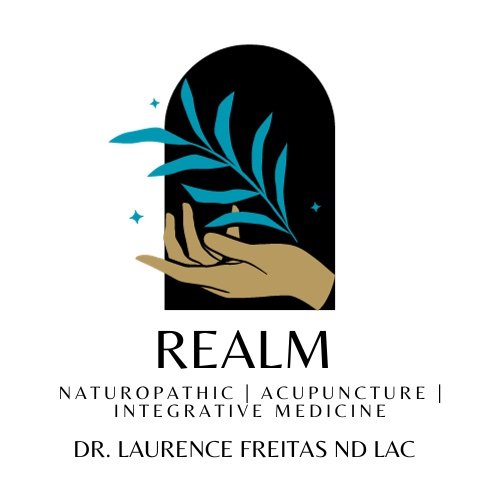Sleep apnea is one of the many causes of insomnia. The Greek root of apnea is apnos, or "without” - a- and pnein, "to breathe." It is a potentially serious sleep disorder in which the person repeatedly stops and starts breathing again. Chances are, if you’ve been told you snore loudly and you are constantly tired even after a full night of sleep, you could have sleep apnea. It’s a frustrating condition to be sure, as no one likes to be tired all the time, and those living with sleep apnea sufferers can also become frustrated from their lack of sleep. Thankfully, as with most medical conditions, there are things you can do to proactively either reduce the symptoms of sleep apnea or rid yourself of it altogether—and that’s what we go into below.
The Different Types of Sleep Apnea
As The Mayo Clinic notes, there are different kinds of sleep apnea, and the reasons for them and symptoms vary.
The three main types of sleep apnea are:
Obstructive sleep apnea, the most common form that occurs when the throat muscles relax
Central sleep apnea, which occurs when your brain doesn't send the right signals to the muscles that control breathing
Complex sleep apnea syndrome, aka treatment-emergent central sleep apnea, which happens when someone has both obstructive sleep apnea and central sleep apnea
Obstructive sleep apnea is the majority of what I see in my practice, and this happens when people get relaxed when in a deep sleep and the lungs are trying to work to get the air to go through. Those suffering from it wake up because they’re essentially suffocating. People don’t realize that they woke up to get the muscles to start breathing again. Then they start relaxing, snoring, and then the cycle repeats itself—sometimes multiple times in a minute. As you’d imagine, this can significantly impact their fatigue during the day.
Symptoms of Sleep Apnea
As with any condition, sleep apnea symptoms are likely to vary from person to person, but some general things occur in most cases.
The most common symptoms of sleep apnea are:
Hypersomnia - being sleepy and needing naps during the day
Very loud snoring
A partner who notices you stopping breathing during the night
Gasping for air during sleep
Dry mouth, throat, or nose, or even a sore throat
Headaches because you weren’t getting enough air
Problems staying asleep - you fall asleep quickly but are constantly waking up because of the apneic episodes
Being anxious, snappy, irritable
The Risk Factors for Sleep Apnea and The Diseases It’s Linked To
Certain things predispose people to sleep apnea, and knowing what they are can be helpful in treating it.
The following are common risk factors for sleep apnea:
Gender - men are two to three times more likely to have sleep apnea (physiologically, women have thinner mouths and throats)
Excessive weight over time will create fat deposits around the airway, making neck circumference a factor
Alcohol or other sedatives may relax those tissues
Smoking - tissues swell up when they get irritated, reducing the airway size
Allergies
And just as certain things increase the risk of sleep apnea, the sleep disorder itself also increases the risks for many diseases:
Heart disease
Heart attack
Hypertension
Dementia
Parkinsons
Diabetes
Polycystic Ovary Syndrome - hormone-related problems
Stroke
Lung diseases like asthma
Treatment for Sleep Apnea
Many of the treatments for sleep apnea aim to open up those airways and improve muscle tone in the throat.
Below are some of the treatments for sleep apnea:
Weight loss
Exercise - breathing moderately to aggressively will improve and work out the muscle tone of the throat
Mandibular devices like mouthguards to help keep the jaw forward, so the tongue doesn’t fall back - dentists and Ear, Nose, and Throat (ENT) specialists will sometimes prescribe these
Alternative masks
Throat and mouth exercises
Reduction of allergies, alcohol, smoking - all of these can contribute to sleep apnea
Taping the mouth to reduce snoring
CPAP (continuous positive airway pressure) machine - adds extra pressure to keep those tissues out of the way
CPAP machines have gotten so smart that they will detect when your airway is restricted and add more pressure to open the airway. They’re much “smarter” now than when they were first invented. They’re quieter and you don’t have to wear the whole face mask. Instead, these “air pillows” are isolated to the nose and are much more comfortable. They are life-changers for many people who suffer from sleep apnea.
Interestingly enough, there have even been studies that show moderate, daily daytime didgeridoo and other brass instrument playing helps reduce sleep apnea symptoms, which makes sense, as you’re using those airways and improving the tone of the throat muscles.
If you’re feeling excessively tired all the time and not sleeping well, talk to your doctor or consider taking part in a sleep study. The Epworth Sleepiness Scale (ESS) is a questionnaire that you can also take and give those results to your doctor. Alternatively, you can do the STOP-BANG questionnaire used to rate the risk of obstructive sleep apnea.
As a doctor in Naturopathic & Integrative Medicine in Wellness, I’d love to help you find a non-habit-forming way to improve your sleep and reduce or eliminate your sleep apnea symptoms. Getting quality sleep affects so many other areas of our lives, so contact me, and we can get started on a plan that works best for you.
